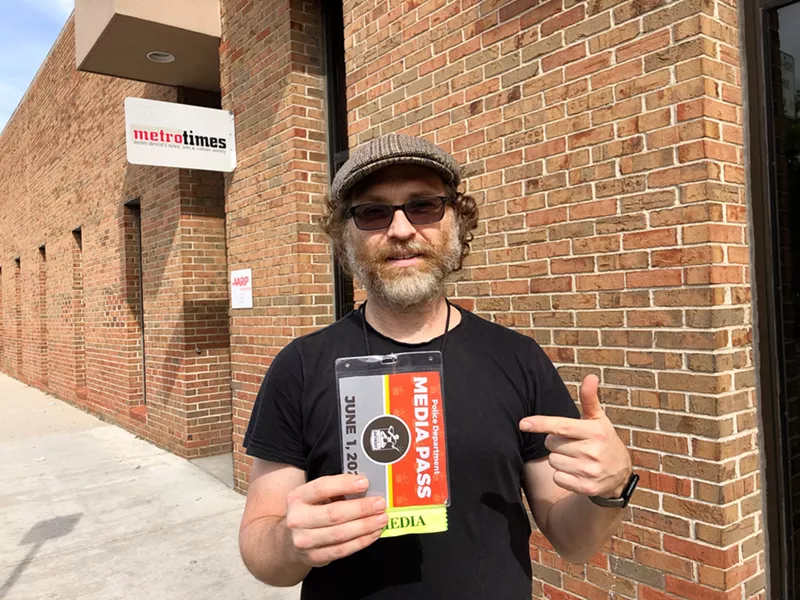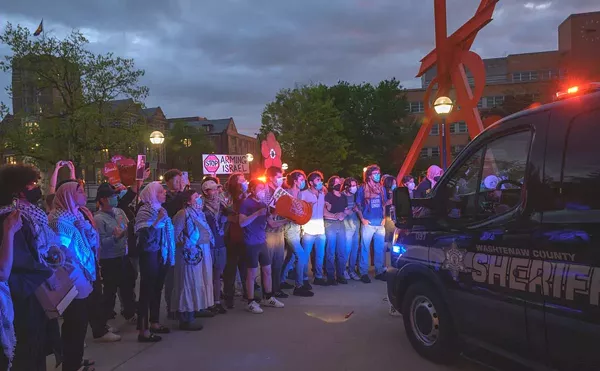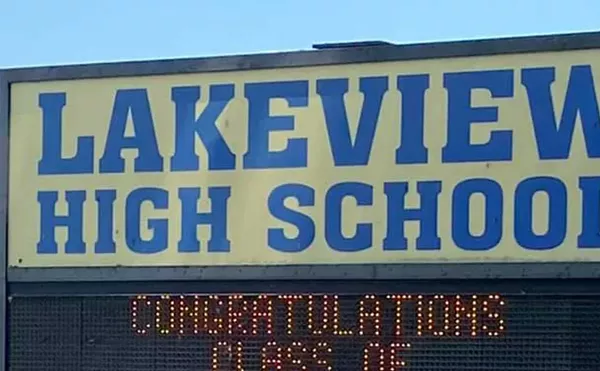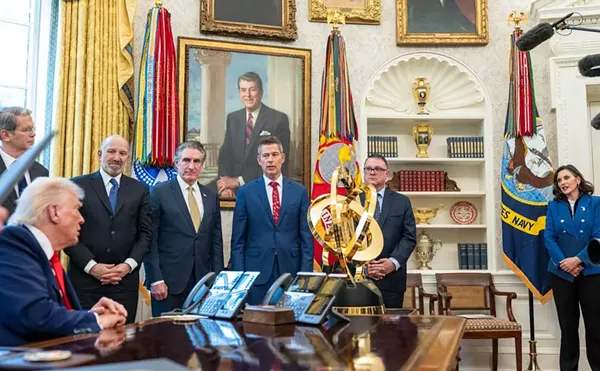Detroit police are trying to figure out how to identify reporters so they stop shooting us with tear gas and rubber bullets

Audio By Carbonatix
[
{
"name": "GPT - Leaderboard - Inline - Content",
"component": "35519556",
"insertPoint": "5th",
"startingPoint": "3",
"requiredCountToDisplay": "3",
"maxInsertions": 100,
"adList": [
{
"adPreset": "LeaderboardInline"
}
]
}
]

Abigail Shah
We guess they couldn't tell he was a reporter from the newsboy cap?
Last weekend, it could at times be difficult for the press to keep an eye on and document the historic clashes between police and Black Lives Matter protesters because we kept getting caught in the melée.
Here in the Motor City, an MLive photographer was shot with rubber bullets. An officer swatted a Detroit Free Press reporter's phone out of their hand, killing the live feed, and Metro Times's Steve Neavling, the Motor City Muckraker, was stunned by flash bangs and tear gas. Detroit News reporter Christine MacDonald was even briefly arrested and handcuffed.
Of course, there is an inherent risk in reporting at a scene like these. But after the stories came out, the City of Detroit and DPD reached out to heads of newsrooms to try and work out a way to better identify reporters so they stop shooting us with tear gas and rubber bullets and we can do our jobs.
See, a little secret about the media is that what we call a "press badge" or "media credentials" is pretty much something that every newsroom just kind of makes up, if they want to. (In his book Sh*tshow! The Country's Collapsing ... and the Ratings are Great, Charlie LeDuff says he made his, after being asked for one too many times, by simply laminating a head shot and the bar code off of a bag of chips.) Our usual lanyard "press badges" just weren't going to cut it in a battlefield.
DPD wanted something they could see from a distance in the dark, and that couldn't be duplicated by bad actors. The newsrooms wanted something that could be also be discreet in case the reporters needed to be clandestine.
So the Mayor's office came up with a compromise: a big, bold press badge that is emailed out to outlets on an approved list each day. It's printed at home, and the colors change each day. At the beginning of each protest, DPD will brief its officers on the day's colors.
Deputy Chief Todd Bettison says the official orders are for DPD to honor the First Amendment rights of both the protesters and the members of the press.
"The instructions under Chief [James] Craig's leadership are to be patient, to use restraint, and to also understand that they have a right to peacefully protest," Bettison says. "Our officers were instructed with the protesters — as long as they're being peaceful, they're not destroying property — to allow them to move about freely and to assist to provide a traffic [route] that's safe for them."
Nevertheless, for the past three days, protests have escalated to violent confrontations and dozens of arrests. Protesters say that DPD officers have been overly aggressive and have taunted and goaded protesters. Bettison confirmed that two police officers are being investigated after a video posted to social media showed two officers unnecessarily push a man to the ground. Some protesters have attacked officers with rocks, bottles, and even railroad spikes.
The Mayor has issued an 8 p.m. curfew for the next seven days, giving DPD a reason to remove people from the streets by force.
Stay on top of Detroit news and views. Sign up for our weekly issue newsletter delivered each Wednesday.






